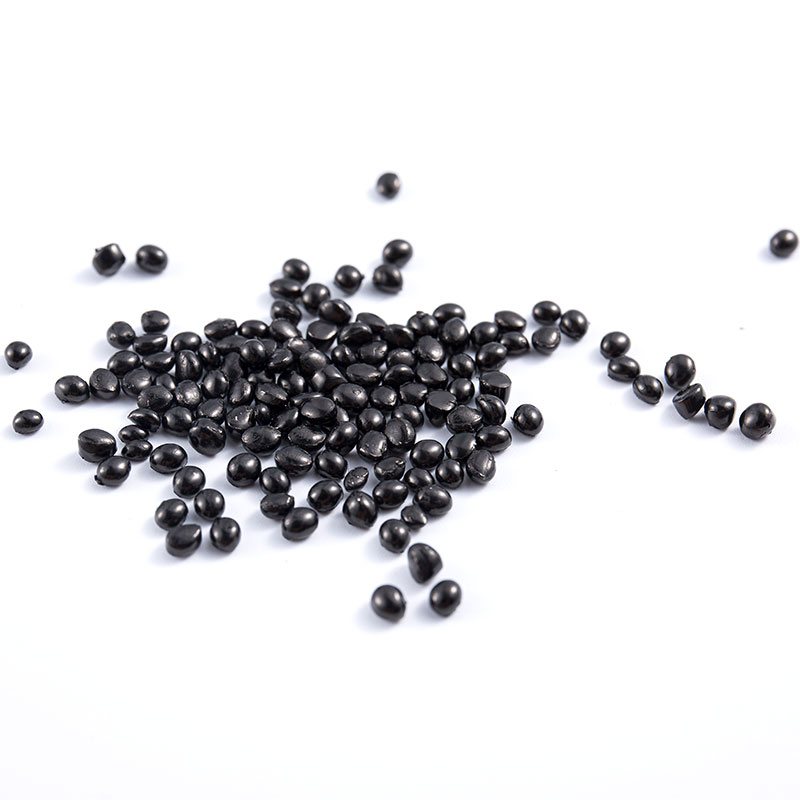Does the sheet, profile, and wire black masterbatch contain components that may affect insulation performance?
Understanding the Relationship Between Black Masterbatch and Insulation Performance
The insulation performance of sheet, profile, and wire products is closely related to the formulation design of the black masterbatch used in their manufacturing. These applications are common in electrical housings, cable insulation layers, structural protective components, and extruded technical profiles. In such products, black masterbatch must deliver stable color depth and processing consistency without introducing components that may interfere with dielectric strength, volume resistivity, or long-term insulation reliability. As part of its technology philosophy, E-LUCK emphasizes material intelligence and controlled dispersion to ensure that its black masterbatches meet complex functional demands across polymer systems used in insulation-sensitive applications. Whether applied in cable sheathing, rigid profiles, or flat sheets, the formulation must maintain purity, avoid conductive impurities, and prevent chemical interactions that could alter electrical behavior over time.
Carbon Black Purity and Its Impact on Dielectric Properties
Carbon black is the primary colorant in sheet, profile, & wire black masterbatch; however, not all carbon blacks perform equally in insulation-related environments. Impure carbon blacks or those with excessive ash content may contain trace mineral substances that can reduce resistivity. When used in wire insulation or profiles for electrical components, such impurities may create localized hotspots or negatively affect dielectric breakdown values. E-LUCK specifically evaluates the purity levels of carbon blacks used in insulation-related masterbatch grades. High-purity pigments with controlled ash content help ensure that the masterbatch does not compromise the insulating characteristics of the base polymer. Maintaining this control supports reliable dielectric performance and reduces the risk of premature component degradation during long-term service.
Dispersion Quality and Its Effect on Electrical Uniformity
Uniform dispersion plays a major role in determining whether the masterbatch will alter insulation behavior. Poorly dispersed carbon black can create agglomerates, which may form micro-conductive pathways under electrical stress. In sheet and profile extrusion or wire coating processes, this risk is amplified because the polymer undergoes stretching or alignment that may orient these agglomerates along stress fields. To mitigate this, E-LUCK applies advanced dispersion technology to achieve controlled particle breakdown and consistent distribution. This consistency minimizes the formation of conductive clusters, helping maintain stable volume resistivity across the final plastic structure. Proper dispersion also supports stable rheology, enabling processors to extrude wire coatings or profile sections with predictable electrical performance.
Impact of Dispersion on Insulation Properties
| Dispersion Quality |
Expected Electrical Performance |
Potential Risks if Poor Dispersion Occurs |
| High Uniformity |
Stable resistivity, consistent dielectric strength |
Minimal risk of micro-conductive sites |
| Moderate Uniformity |
Acceptable insulation for non-critical parts |
Slight risk of uneven electrical characteristics |
| Poor Uniformity |
Variability in insulation, risk of failure |
Formation of conductive pathways, reduced breakdown voltage |
Carrier Resin Compatibility and Its Role in Insulation Stability
The carrier resin used in black masterbatch must match the base polymer to prevent phase separation and maintain full electrical insulation. When the carrier resin is incompatible, microscopic separation can occur, potentially creating discontinuities in the polymer matrix. These discontinuities may concentrate electrical stress, lowering insulation performance under high voltage or long-term thermal exposure. E-LUCK selects carriers based on compatibility with insulation-type polymers such as PE, PP, EVA, and certain engineering plastic grades. The compatibility ensures that the masterbatch blends cleanly, forming a uniform matrix that maintains the dielectric behavior expected from the base polymer. The resulting product therefore avoids insulation loss caused by resin mismatch or poor melt blending.
Additive Systems and Their Influence on Electrical Behavior
Additives within a black masterbatch help improve thermal stability, processing consistency, and color maintenance, but they must not introduce conductive or ionic components in insulation-dependent applications. Stabilizers, antioxidants, and dispersing aids can be formulated to remain electrically neutral. E-LUCK’s additive system selection is based on minimizing ionic content, avoiding metal-containing stabilizers, and ensuring long-term compatibility with electrical-grade polymers. This approach prevents migration or chemical reactions that could lead to insulation weakening. In wire and cable applications, additive stability is especially important because the insulation layer is exposed to environmental stress, heat, and mechanical movement throughout its lifecycle.
Effect of Moisture and Volatile Components on Insulation Reliability
Moisture absorption and volatility can affect dielectric stability. If a black masterbatch contains hygroscopic components or retains excessive volatiles from production, the final sheet or wire coating may trap microbubbles or form localized regions with reduced insulation strength. E-LUCK minimizes volatile residues through controlled extrusion and drying processes during masterbatch formulation. This ensures that the masterbatch does not contribute to moisture-related dielectric loss or insulation failure. Maintaining low moisture content supports dimensional stability and reduces electrical leakage potential in wire insulation and technical profiles.
Processing Stability and Its Relation to Electrical Performance
Extrusion and coating processes used for sheets, profiles, and wires require thermal and mechanical stability from the masterbatch. Fluctuations in melt viscosity, excessive die lip buildup, or inconsistent melt flow can create surface irregularities and internal voids. These imperfections may weaken the insulation layer or create areas where electrical stress concentrates. E-LUCK formulates its sheet, profile, & wire black masterbatch to maintain stable rheological behavior across a range of processing speeds and temperatures. By reducing die drool and minimizing degradation residues, the masterbatch helps ensure that the insulation layer remains uniform, free of structural anomalies that could impair electrical reliability.
Processing Factors Influencing Insulation Stability
| Processing Factor |
Desired Behavior |
Potential Insulation Risk |
| Melt Flow Uniformity |
Consistent coating thickness |
Thin spots weaken insulation |
| Low Die Build-Up |
Smooth extrusion |
Contamination causing electrical weak points |
| Thermal Stability |
Clean processing |
Degraded residue introducing conductive particles |
Chemical Compatibility and Long-Term Insulation Integrity
In sheet and wire insulation applications, polymer materials may encounter environmental factors such as heat, humidity, oils, or mechanical abrasion. If a black masterbatch contains reactive components, it may influence how the polymer behaves under these stressors. Non-neutral additives or poorly matched carbon black surface chemistries could cause gradual changes in insulation values. E-LUCK designs formulations around chemical neutralization principles, ensuring that the masterbatch remains inert within the polymer matrix. This helps preserve long-term dielectric strength and supports reliable service life for wire coatings, appliance components, and industrial profiles.
Thermal Oxidation Behavior and Its Impact on Electrical Strength
Thermal oxidation can affect polymers used in insulation, especially in wire coatings exposed to elevated temperatures during operation. If the black masterbatch accelerates oxidation through catalytic impurities or unstable additives, the insulation may embrittle or lose dielectric uniformity. E-LUCK incorporates stabilized systems that maintain polymer integrity under heat exposure. The thermal stability of the masterbatch ensures that the insulation layer avoids premature oxidation or discoloration, supporting both mechanical strength and stable electrical characteristics over time.
Assessment of Components That Could Influence Insulation Performance
A well-formulated sheet, profile, & wire black masterbatch should avoid conductive impurities, incompatible resins, or reactive additives. The formulation must instead support electrical neutrality and structural uniformity. E-LUCK’s development guidelines emphasize avoiding components that may weaken insulation performance. This includes the careful selection of carbon black purity, the elimination of metal traces, the use of low-ionic stabilizers, and resin-carrier selection based on compatibility with insulation-oriented polymers. These measures help ensure that the masterbatch does not introduce risks such as reduced volume resistivity, increased dielectric loss, or premature electrical failure.
Ensuring Insulation Safety Through Thoughtful Masterbatch Design
Sheet, profile, & wire black masterbatch can be successfully used in insulation-sensitive applications when the formulation is controlled for purity, dispersion, carrier compatibility, and additive neutrality. Through its commitment to precision and consistent material behavior, E-LUCK develops black masterbatches that support both appearance and functional performance across multiple industries. By applying advanced dispersion processes and carefully selected raw materials, the company ensures that its products do not interfere with dielectric properties, enabling stable insulation performance even under demanding environmental and mechanical conditions. This approach allows manufacturers of wires, electrical housings, and extruded profiles to achieve reliable insulation behavior while maintaining the black coloration and processing efficiency required for modern polymer systems.

 English
English Español
Español












